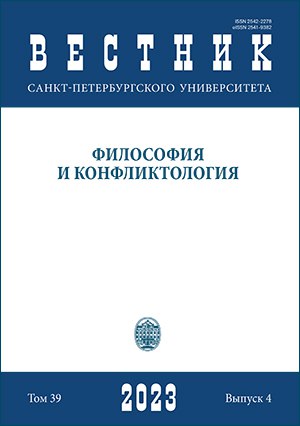AI and the Metaphor of the Divine
DOI:
https://doi.org/10.21638/spbu17.2023.411Аннотация
Идея Бога является одной из самых глубоких в человеческой культуре. Раньше она рассматривалась в основном в метафизических и этических дискуссиях, теперь стала частью дискурса в философии техники. Метафора Бога используется некоторыми авторами для представления роли искусственного интеллекта (ИИ) в современном мире. В статье исследуются четыре аспекта этой метафоры: творение, всеведение, тайна, теодицея. Творческий акт показывает сходство человека с Богом, в том числе и в том смысле, что технология, являясь созданной людьми, в то же время может выйти из-под контроля творца. Способность ИИ использовать потоки данных для аналитики и прогнозирования может представляться как «всеведение» и выглядит загадочно из-за неспособности людей полностью понять работу ИИ. Дискуссия о встраивании этики в технологию ИИ показывает желание добавить к всеведению и всемогуществу еще одну черту, а именно всеблагость. Метафора Бога применительно к ИИ раскрывает страхи и стремления человека как в рационально-прагматическом, так и в символическом плане. Как и другие технологии, ИИ направлен на удовлетворение человеческого желания большей власти. В то же время метафора Бога указывает на власть техники над человеком. Она раскрывает трансцендентное в современных представлениях о технологиях и вместе с тем может внести вклад в дискуссию о том, каким должен быть технологический дизайн ИИ, поскольку роли сотрудника или коммуникатора уже приводят к размышлению о том, что ИИ устроен более совершенно.
Ключевые слова:
искусственный интеллект, ИИ, этика, технологии, метафора, Бог
Скачивания
Библиографические ссылки
References
Загрузки
Опубликован
Как цитировать
Выпуск
Раздел
Лицензия
Статьи журнала «Вестник Санкт-Петербургского университета. Философия и конфликтология» находятся в открытом доступе и распространяются в соответствии с условиями Лицензионного Договора с Санкт-Петербургским государственным университетом, который бесплатно предоставляет авторам неограниченное распространение и самостоятельное архивирование.






